I made Vanocka for a Christmas party this weekend. This was a gathering of some really neat folks so I wanted to bring something special. Vanocka (pronounced Van-otch-kah) is a beautifully shaped Czech Christmas Braid filled with candied fruits and nuts.
Beautifully shaped and scrumptious, Vanocka is one of the great breads of the world. Vanocka is similar to other Eastern European egg twist breads, but is a little more elaborate. It is traditionally shaped with a four-stranded braid, followed with a three-strand braid and topped with a single twist.
The list of ingredients is similar to Italian Panettone so I decided to make it utilizing the overnight sponge method we used for the Panettone in the BBA Challenge. I also soaked the candied fruit and raisins in rum and some lemon and orange extracts. This definitely took the flavor up a notch or two.
Using an overnight sponge gave this bread a wonderful texture, and it allowed me to make the bread in stages so I could get to the dinner party on time.
Vanocka Christmas Braid (pronounced Van-otch-kah)
Makes
: 1 large braided loaf
Adapted from: The Vanocka recipe from Red Star Yeast and the Panettone formula in The Bread Baker’s Apprentice by Peter Reinhart.
Ingredients:
Wild-Yeast Sponge
- 1 cup (7 ounces) mature starter (I used my apple starter)
- 1 cup (8 ounces) milk, lukewarm (90 to 100 degrees F.)
- 1 cup (4.5 ounces) unbleached all-purpose flour
Fruit Blend
- 1/3 cup golden raisins
- 1/3 cup candied fruit blend
- 2 tablespoons brandy or rum
- 2 teaspoons orange or lemon extract (I used a combination)
- 1 teaspoon vanilla extract
Dough Ingredients
- 3 1/2- 4 cups unbleached all-purpose flour
- 1/4 cup granulated sugar
- 1 teaspoon salt
- 1 tablespoon (.33 ounce) instant yeast
- 2 eggs, large, at room temperature
- 4 to 6 tablespoons (2 to 3 oz) water, lukewarm (90 to 100 degrees F.)
- 1/2 cup (4 ounces) unsalted butter, at room temperature
- 1/3 cup (5 ounces) blanched almonds, slivered or chopped
- I also added about 1/2 teaspoon of dried lemon granules
Directions:
Preparing the Wild-Yeast Sponge
The day before making the bread, add a cup of starter in a medium mixing bowl. Mix in the milk and flour just long enough to hydrate all the flour and to make a sponge.
Cover the bowl with plastic wrap and let the dough ferment at room temperature for approximately 4 hours, or until the sponge begins to foam and bubble, then put it in the refrigerator overnight.
Soaking the fruit
While you’re waiting for the sponge to ferment, mix together the raisins and candied fruit in a bowl. Add liquor (if using) and extracts. Cover the bowl and let this sit out overnight to allow the fruit to fully absorb the liquid.
Mixing the Dough
The next day, remove the wild-yeast sponge from the refrigerator 1 hour before making the dough to take off the chill.
Stir together the flour, sugar, salt, and yeast in a bowl (or in the bowl of an electric mixer). I added the lemon granules to the dry ingredients.
Add the sponge, egg, and egg yolk. Stir (or mix) these together until the form a firm, but supple, ball. I started out using a Danish Dough Whisk, then finished mixing the dough in my stand mixer.
Add as much of the lukewarm water as needed to form a dough. I didn’t need to add any of the water; the sponge provided enough hydration. Stop mixing and allow the dough to rest for 20 minutes to let the gluten begin to develop.
Add the softened butter and the soaked fruit mixture and continue mixing until the ingredients are evenly distributed. I used the stand mixer for this part as well.
Transfer the dough to a counter sprinkled with flour and knead the dough gently for 2 to 4 minutes, until it is soft and supple but not overly sticky although it can be very tacky. Gradually work in the almonds until they are evenly distributed.
Add flour if necessary (you will probably have to sprinkle small amounts of flour continually as you knead to keep it from sticking to your hands, but use only the minimum necessary to allow you to knead without getting the dough all over your hands). The entire kneading process, after the resting period, should take 6 to 10 minutes. The dough should be soft and supple, tacky but not sticky.
Lightly oil a bowl and transfer the dough to the bowl, rolling it around to coat it with oil. Cover the bowl with plastic wrap and let the dough ferment at room temperature for approximately 2 hours. During this time, it will rise very slowly and only increase to about 1 1/2 times its original size.
After 2 hours, the dough was still a bit sticky so I placed it in the refrigerator for a a little while. This made it much easier to handle and shape the braids without having to use a lot of extra flour.
Dividing and Shaping the Braids:
Divide the dough into 2 equal pieces – about 1.5 pounds each. Shape the pieces lightly into rounds; cover; allow dough to relax 10 minutes. My dough balls weighed about 1.55 pounds each.
Divide one dough ball into 4 equal pieces – about .385 oz each. Divide the other dough ball into 5 equal pieces – about .31 oz each.
Shape the 4 dough balls into 18 to 20-inch ropes.
Cover the remaining dough balls with plastic wrap until you’re ready to use them.
Shaping the 4-Strand Braid:
On greased baking sheet, or parchment paper, connect 4 strands of equal length at one end, with the tips facing you. From the left, number the strands 1, 2, 3, 4.
Follow this pattern: 4 over 2, 1 over 3, and 2 over 3.
Repeat until you run out of dough, pinching the tips together when you get to the end.
Shaping the 3-Strand Braid:
Take 3 of the remaining dough balls and roll them into 16-inch ropes. Place the 3 strands perpendicular to you and parallel to one another. From the left, number the strands, 1, 2, 3. Beginning in the middle of the loaf and working toward you, follow this pattern: right outside strand over the middle strand (3 over 2); left outside strand over the middle strand (1 over 2).
Repeat until you reach the bottom end of the dough. Pinch the end closed to seal and rotate the loaf 180 degrees so that the unbraided end is facing you. Continue braiding but now weave the outside strand under the middle strand until you reach the end of the loaf. Pinch together the tips at both ends to seal the finished loaf.
Lay the 3-strand braid down the center of the top of the 4-strand braid. Brush the loaf with egg wash.
Shaping the Single Twist:
Shape the remaining 2 dough balls into 12-14-inch ropes. Form a deep channel in the top braid by pressing down with side of hand. Combine egg and water for glaze; brush in channel. Twist the 2 ropes together; pinch ends to seal. Place in channel on top of braid, pressing down to seal twist onto braid. Brush the top with egg wash.
Cover; let rise in a warm place until indentation remains after touching, about 30 to 45 minutes. Gently brush entire loaf with egg wash again; sprinkle with whole almonds. You have to be careful with this part because the strands might try to slide off. I kept having to gently push them back together.
Bake in a preheated 350ºF oven 40 to 45 minutes, until golden brown. Cool completely on a wire rack. The strands slid a bit during baking so I had to carefully ease them back together. Even though the strands spread during baking, the finished loaf was still beautiful.
At this point, it was time to go so I wrapped the cooled bread in a cloth and transported it to the Christmas party. The Vanocka tasted delicious and was a big hit with everyone who tried it.
This bread has been YeastSpotted. Please visit Wild Yeast to view all of the lovely breads in the weekly roundup.
Thanks for joining me in the bread baking blog. I hope you enjoy this lovely Christmas Braid.
Happy Baking!
Cathy
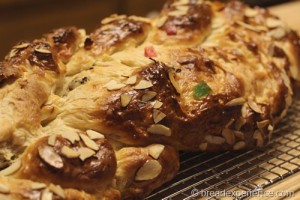
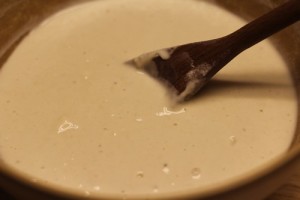
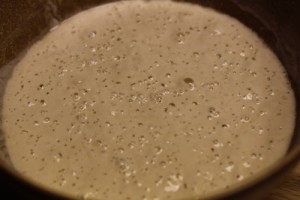
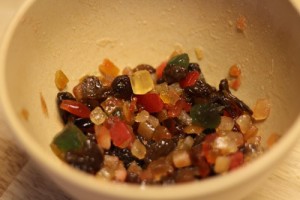
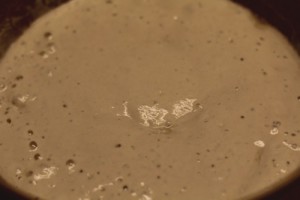
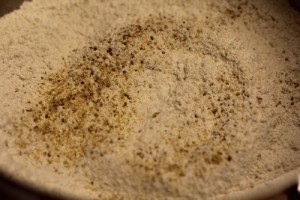
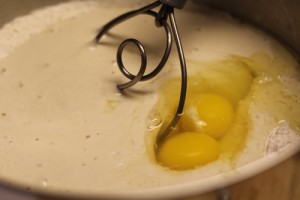
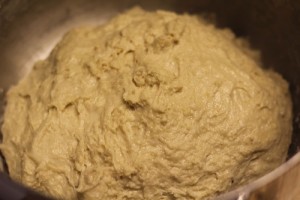
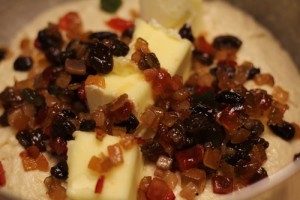
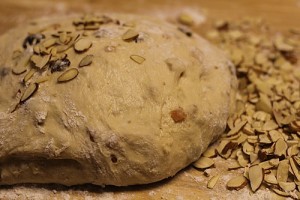
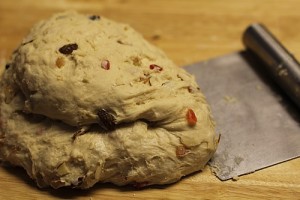
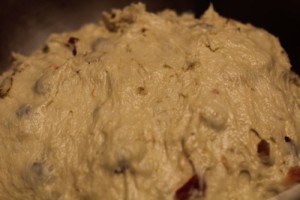
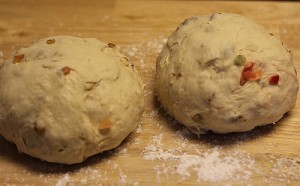
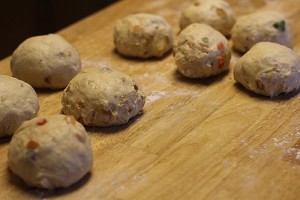
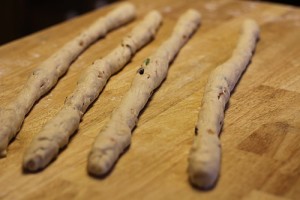
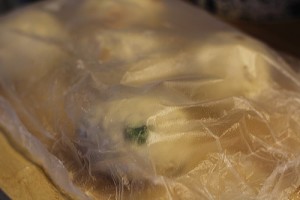
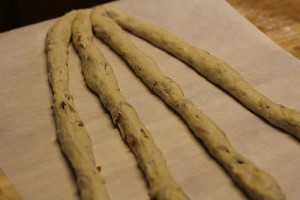
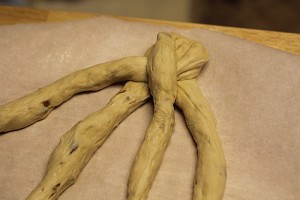
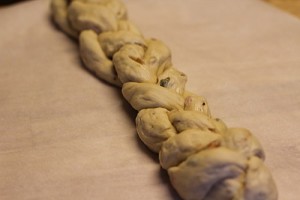
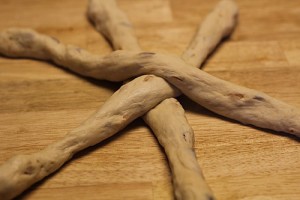
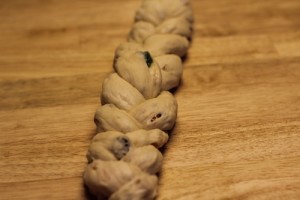
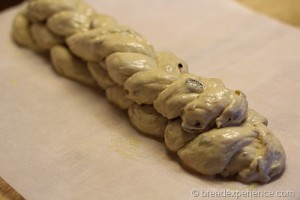
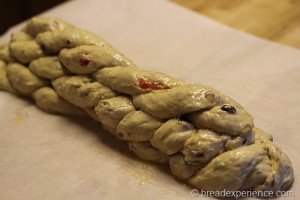
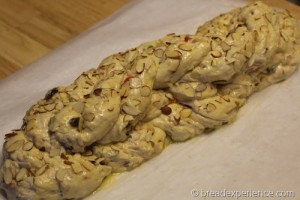
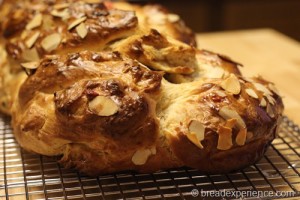
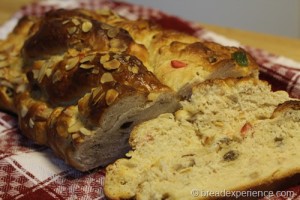
Margaret Murphy Tripp says
Wow, that bread looks delicious!
Cathy (breadexperience) says
Thanks! It is delicious! It tastes great plain and toasted with butter. Yum!
Midnite Baker says
This looks very yummy! Merry Christmas. M
Cathy (breadexperience) says
Thank you Midnite Baker! Merry Christmas to you as well!
JavelinWarrior says
My mother used to make a braided bread similar to this for Christmas – and now this is all I can think of! I hope you don’t mind but I’m so inspired I’ve included this post in my Friday Food Fetish roundup. Thanks for sharing and MOAR please 🙂
Cathy (breadexperience) says
I’m so glad you’ve been inspired. Thank you for including this post in your Friday Food Fetish roundup.
Chrissy Singer says
Looks great! I just posted about this bread on my own blog at http://winemeanddineme.blogspot.com and thought your recipe looked great and very authentic!
Cathy W. says
Thanks Chrissy! I hope you enjoyed it. Happy Baking!